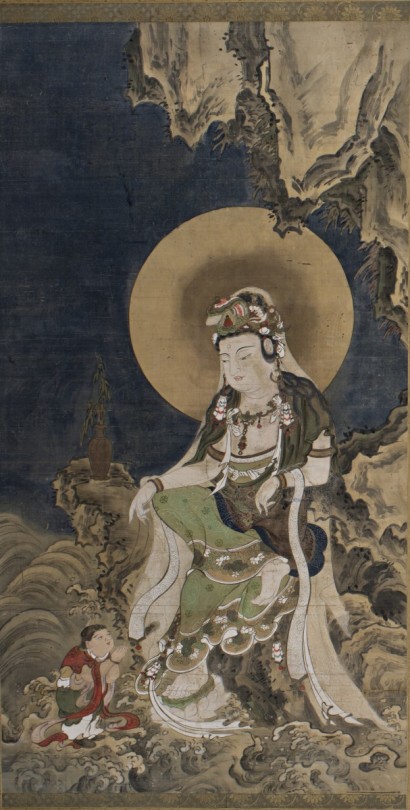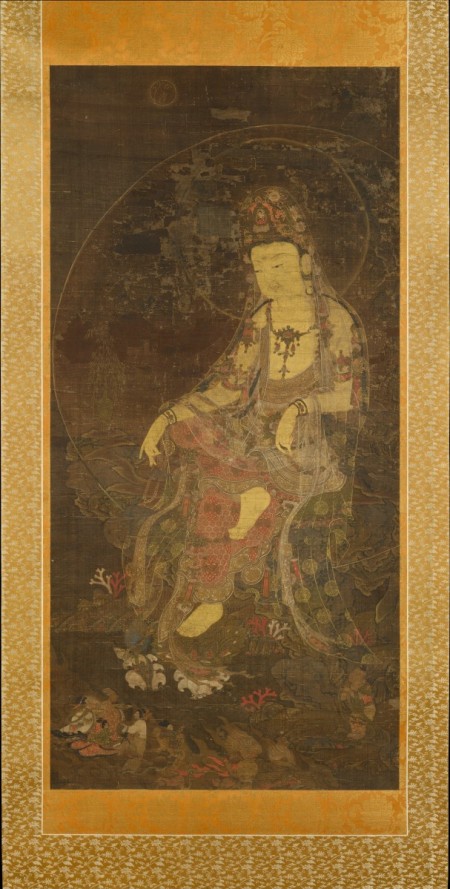Japan, Edo period, 1615–1868; hanging scroll, ink and color on silk; image: 61 7/8 x 33 in., mount: 87 7/8 x 39 1/2 in.; The Frances Lehman Loeb Art Center, Vassar College, Gift of Daniele Selby ’13, 2014.20.1.
Water-Moon Avalokiteshvara
Korea, Goryeo dynasty, first half of the 14th century; hanging scroll, ink and color on silk; image: 45 1/16 x 21 7/8 in., mount: 79 3/8 x 28 in.; The Metropolitan Museum of Art, Charles Stewart Smith Collection, Gift of Mrs. Charles Stewart Smith, Charles Stewart Smith Jr., and Howard Caswell Smith, in memory of Charles Stewart Smith, 1914, 14.76.6, photo: www.metmuseum.org.
The Water-Moon form originated in China but persisted longer in Korea and Japan; Korean painters produced especially beautiful examples, such as the 14th-century work on the right. In comparing it with the Edo-period (1615–1868) scroll to the left, we see that such elegant Korean paintings provided long-lasting, influential models for Japanese painters. The setting on Potalaka is an essential feature of the Water-Moon manifestation.





